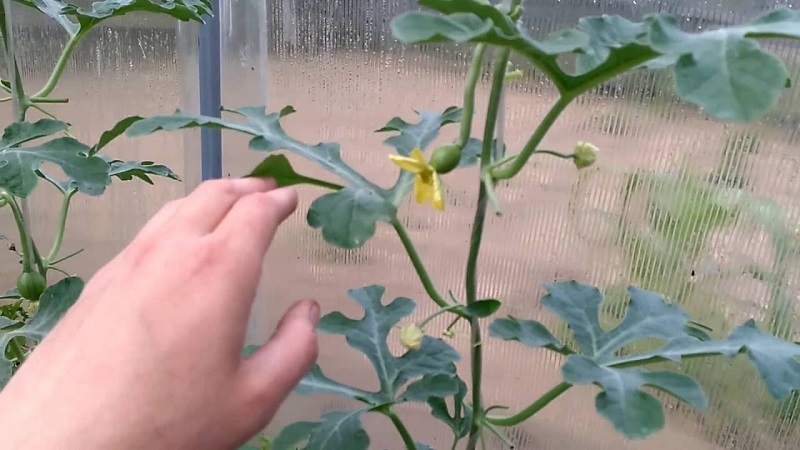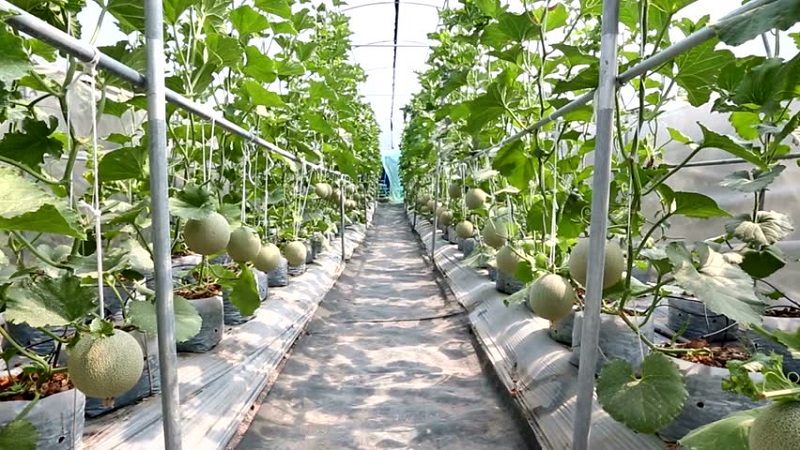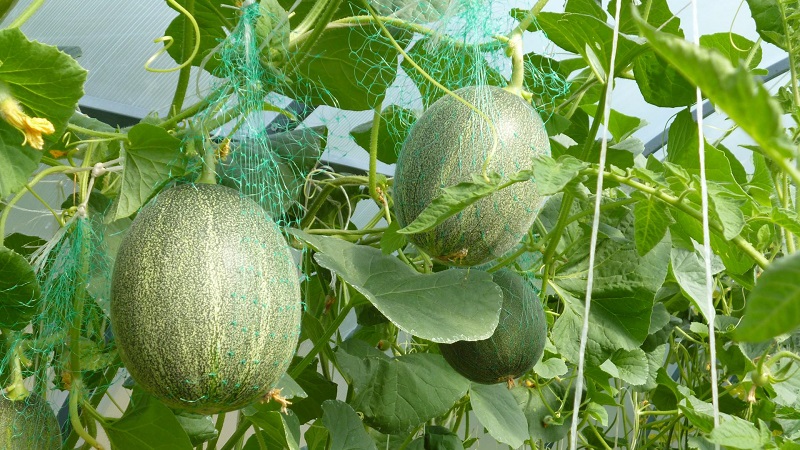How and when to form a melon in the open field correctly
Melon is a dessert vegetable with a rich sweet taste and delicate aroma. Despite the sweetness, it is considered a dietary product, since it consists of 90% water and promotes proper digestion. Plus, it is rich in vitamins and minerals.
Homeland melons hot Central Asia is considered, but thanks to the achievements of modern breeders, this honey plant is also grown in central Russia. However, to get a rich harvest, you need to know the nuances of crop care. One of them is the formation of a bush.
In this article, we'll show you how to pinch a melon and when to start forming outdoors.
The content of the article
The importance of correct and timely melon formation
Melon is grown both outdoors and in greenhouses or greenhouses. The culture is sown in prepared soil with seeds or sown with seedlings.
When cultivated in open ground, removing excess shoots from the melon is a prerequisite for a good harvest.
Pinching limits the growth of green mass in the bush and allows you to grow larger fruits. In addition, melons will ripen earlier and will taste sweeter.
When growing large-fruited varieties, part of the fruit ovaries is also removed. From 3 to 6 fruits are left for 1 bush.

Landing time and site preparation
The melon planting site is started in the fall. Given the southern origin of the plant, they choose a sunny, dry place, protected from cold winds. If the soil in the garden is clayey, river sand is additionally introduced (about 1 bucket per 1 sq. M).
The earth is dug up deeply and fertilized. Humus is added at the rate of 3-4 kg per 1 sq. m. In the spring, the garden bed is dug up again, potash and phosphate fertilizers are added.
In the south of Russia, the melon is sown as seeds in open ground in late April - early May. In the middle zone of our country, the culture is grown only through seedlings.
Need to know!Melon seedsused for sowing must be at least three years old. Mainly male plants grow from fresh seeds, therefore, there will not be a good harvest.
Peat containers are perfect for seedlings. It is convenient to plant such seedlings together with pots, and peat will serve as an additional fertilizer.

Basic rules for the formation of melons in the open field
In the wild, melon bushes grow strongly. This is due to the southern origin of the culture. However, in our climate there are no conditions for filling and ripening all the fruits on the bush. Therefore, only the largest and healthiest are left, no more than 3-4 per bush.
Features of the formation of culture
Pinching melon bushes is one of the main agricultural practices that allow you to grow large fruits. This procedure should not be underestimated. Without it, there will simply not be a good harvest.
Formation of the plant consists of removing excess ovaries and timely pinching of unnecessary processes.
In addition, pinching helps to regulate the growth of the lashes and to guide them so that they do not overlap the rows.
Formation methods
When grown in open field, the culture is formed in two ways: vertical and horizontal.
The vertical method consists in the construction of a solid frame to which ropes or wires are tied. The height of the structure is about 2 m. The lower end of each rope is suspended from the melon.Loose lashes and newly emerging shoots are wound around the rope.
The obvious advantage of this method is that the plant receives more light, which has a positive effect on the yield. In addition, the care of the bushes is greatly simplified.
With the horizontal method of formation, the culture grows freely on the ground. Keep in mind that the melon needs a lot of space to grow and branch out.

Formation schemes
The formation of the plant is carried out by pinching the shoots. For hybrid and non-hybrid varieties, the formation patterns are different.
In hybrid varieties, the main lash is not pinched - female flowers are located on it. In non-hybrid ones, pinch the main lash, leaving 2-3 of the most developed lateral shoots.
Stages of the procedure
The formation of the bush begins early, even at the stage of growing seedlings. When 3-4 true leaves have formed on the sprout, the main shoot grows in the axil of the main leaf. They immediately pinch it.
After this operation, lateral processes are formed in the axils of the lower leaves. It is on these lateral branches that most of the fruits will form in the future.
When growing melons in the open field, 2-3 of the strongest shoots are left from the first lateral shoots. This is the second stage of bush formation.
The third stage is carried out at the beginning of the formation of ovaries. At this last stage, all underdeveloped whips and branches without ovaries are mercilessly removed.

How and where to pinch a melon
The shoots are removed carefully so as not to pinch the main stem of the plant. Lateral branches that have grown after the removal of the main shoot are pinched over 4-6 leaves.
After the fruits have formed on the bush and began to pour, the fruit-bearing lashes are pinched. Cut the lash over 3-4 leaves above the fruit.
2-3 melons are left on one plant if it is a large-fruited variety, and 4-6 if the fruits are medium-sized.
To protect against diseases and pests, the cut sites are treated with a mixture of sulfur, coal and lime. The components are mixed in equal parts and the damaged areas are lubricated.
Top dressing before and after pinching
All work on the soil, including top dressing, is carried out before the leaves of the bush close. Fertilizers are applied 2-3 times. Before the first removal of shoots, the melon is fertilized with "Kemira", "Kristalon", ammonium nitrate.
When buds began to form on the lashes, the bushes are watered with a solution of organic fertilizers.
Phosphate-potassium fertilizers are applied last. Top dressing is done 3-4 weeks after the budding phase.
Most common mistakes
Stealing is not the easiest agricultural technique. If done incorrectly, the quantity and quality of the crop will decrease.
Let's list the main mistakes made by gardeners:
- Pinching a melon bush is the same as pinching a watermelon. Though melon and watermelon - related plants, fruit set in them occurs in different ways. In a watermelon, fruits are formed on the main shoot, and in a melon, on the side branches.
- Thickening of plantings. Melon bushes need a lot of space to grow and develop. Even pinching, done according to all the rules, will not help to get a good harvest if the plants are planted too densely.
- Insufficient shoot removal. Extra whips should not be spared. Otherwise, all the nutrients will go to the leaves and stems, little ovaries will form, and the fruits will be small and unsweetened.

Read also:
How to cook a simple but delicious melon jam.
How does melon affect the intestines: weakens or strengthens?
Conclusion
The formation of a melon bush is a prerequisite for a rich harvest of sweet, aromatic fruits. The pinching procedure is carried out regularly throughout the entire growth of the culture.
On average, no more than 3-4 fruits are left per plant. Compliance with these simple rules will help you grow a tasty and healthy dessert vegetable on your site.